
Oliver Wolcott Sr. was an American Founding Father and politician. He was a signer of the United States Declaration of Independence and the Articles of Confederation as a representative of Connecticut, and the nineteenth governor of Connecticut. Wolcott was a major general for the Connecticut militia in the Revolutionary War serving under George Washington.
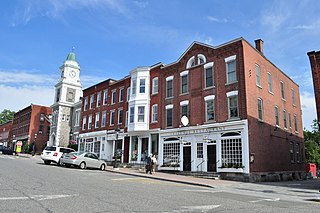
Litchfield is a town in and former county seat of Litchfield County, Connecticut, United States. The population was 8,192 at the 2020 census. The town is part of the Northwest Hills Planning Region. The boroughs of Bantam and Litchfield are located within the town. There are also three unincorporated villages: East Litchfield, Milton, and Northfield. Northfield, located in the southeastern corner of Litchfield, is home to a high percentage of the Litchfield population.

William Williams was an American Founding Father, merchant, a delegate for Connecticut to the Continental Congress in 1776, and a signatory to the United States Declaration of Independence.

The Litchfield Law School of Litchfield, Connecticut, was the first independent law school established in America for reading law. Founded and led by lawyer Tapping Reeve, the proprietary school was unaffiliated with any college or university. While Litchfield was independent, a long-term debate resulted in the 1966 recognition of William & Mary Law School as the first law school to have been affiliated with a university.

Roger Wolcott was an American weaver, statesman, and politician from Windsor, Connecticut. He served as colonial governor of Connecticut from 1751 to 1754.

The Oliver Ellsworth Homestead, also known as Elmwood, is a historic house museum at 788 Palisado Avenue in Windsor, Connecticut. Built in 1781, it was the home of the American lawyer and politician Oliver Ellsworth until his death in 1807, and was designated a National Historic Landmark because of this association. A Founding Father of the United States, Ellsworth (1745–1807) helped draft the United States Constitution, served as the third Chief Justice of the United States, and was a United States senator from Connecticut. The house is owned and maintained and operated as a museum by the Connecticut Daughters of the American Revolution, and is open for tours upon request.

The Huntington Homestead, also known as the Samuel Huntington Birthplace, is a historic house museum and National Historic Landmark at 36 Huntington Road in Scotland, Connecticut. Built in the early 18th century, it was the birthplace and boyhood home of Samuel Huntington (1731–1796), an American statesman and Founding Father. He served as a delegate to the Continental Congress, where he signed the Declaration of Independence. He also served as Governor of Connecticut and was the first presiding officer of the Congress of the Confederation, the first central government of the United States of America.
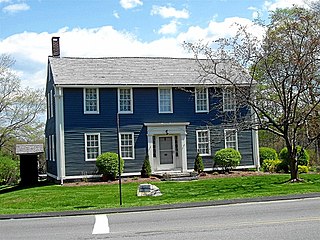
The William Williams House is a historic house in Lebanon, Connecticut at the junction of Connecticut Routes 87 and 207, a National Historic Landmark. It is significant as the residence of Founding Father William Williams (1731–1811), who was a delegate from Connecticut Colony to the Continental Congress and a signer of the Declaration of Independence. Williams lived here from 1755 until his death, and it is a well-preserved and little-altered colonial-era house.

Mount Pleasant is a historic mansion in Philadelphia, Pennsylvania, atop cliffs overlooking the Schuylkill River. It was built about 1761–62 in what was then the countryside outside the city by John Macpherson and his wife Margaret. Macpherson was a privateer, or perhaps a pirate, who had had "an arm twice shot off" according to John Adams. He named the house "Clunie" after the ancient seat of his family's clan in Scotland.
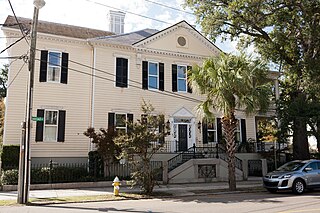
The Edward Rutledge House, also known as the Carter-May House and now The Governor's House Inn, is a historic house at 117 Broad Street in Charleston, South Carolina. This 18th-century house was the home of Founding Father Edward Rutledge (1749–1800), a signer of the United States Declaration of Independence and later Governor of South Carolina. Despite many changes to the house, it retains its 18th-century core dating to about 1760, and was declared a National Historic Landmark in 1971.

Maybury Hill is a historic house at 346 Snowden Lane, in Princeton, Mercer County, New Jersey, United States. Built about 1725, it was the birthplace and boyhood home of Joseph Hewes (1730-1799), a signer of the United States Declaration of Independence. The house, an architecturally excellent example of Georgian domestic architecture, was designated a National Historic Landmark in 1971 for its association with Hewes. It is a private residence not open to the public.

Trinity Church is a historic church at 536 Milton Road in the Milton section of Litchfield, Connecticut. Built beginning in 1802, it is a distinctive blend of Gothic and Classical Revival architecture that is rare in rural Connecticut. The building was listed on the National Register of Historic Places in 1976.
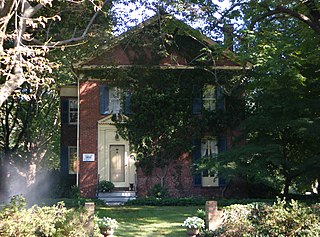
The First Church Parsonage is a historic parsonage house at 160 Palisado Avenue in Windsor, Connecticut. Built in 1852 for the new minister of the First Congregational Church, it is a well-preserved example of transitional Greek Revival-Italianate architecture in brick. The house was listed on the National Register of Historic Places in 1988.

The Gov. Samuel Huntington House is a historic house at 34 East Town Street in Norwich, Connecticut. The house was built in 1783 by Samuel Huntington (1731–96), a signer of the United States Declaration of Independence and a Governor of Connecticut. It was listed on the National Register of Historic Places on October 6, 1970, and is a contributing property to the Norwichtown Historic District.

The Ezekiel Phelps House is a historic house at 38 Holcomb Street in East Granby, Connecticut. Built in 1744, it is a fine example of Georgian architecture, associated with a prominent local family. It was listed on the National Register of Historic Places in 1982.
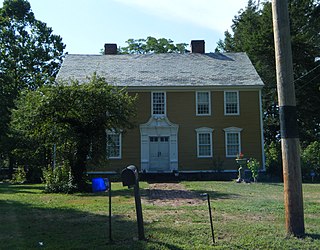
The Ebenezer Grant House is a historic house at 1653 Main St. in the village of East Windsor Hill in South Windsor, Connecticut. Built in 1757–58, it is one of the finest examples of regional colonial architecture in the state. Its rear addition is believed to date to 1695, making it one of the state's oldest surviving colonial structures. The house was listed on the National Register of Historic Places in 1977.
Erastus Wolcott was an American politician and a Connecticut state militia commander during the American Revolutionary War. He served in the Connecticut General Assembly for over twenty years and was a justice of the Connecticut Supreme Court from 1789 to 1792.
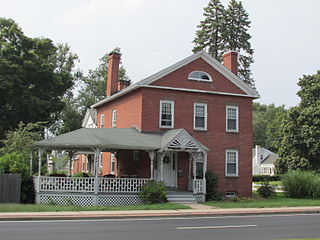
The Ira Loomis Jr. House is a historic house at 1053 Windsor Avenue in Windsor, Connecticut. Built in 1833, it is a good local example of transitional Federal-Greek Revival architecture executed in brick. It was listed on the National Register of Historic Places in 1988.
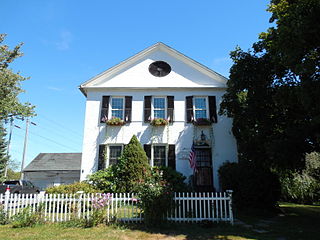
The Oliver W. Mills House is a historic house at 148 Deerfield Road in Windsor, Connecticut. Built in 1824, it is a well-preserved local example of a Federal period brick house. It was listed on the National Register of Historic Places in 1985.
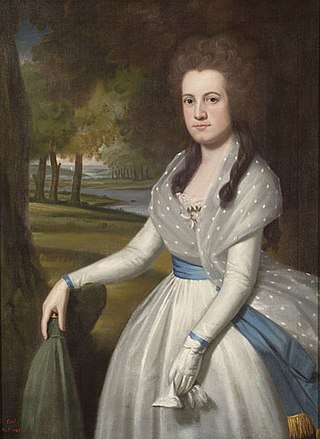
Mary Ann Wolcott Goodrich (1765–1805) was an American socialite in New York, Philadelphia, and Washington, D.C., moving with her husband Chauncey Goodrich as he served as a Representative and a Senator between 1795 and 1813. Her viewpoints were influential in the affairs of state, business and education.
























